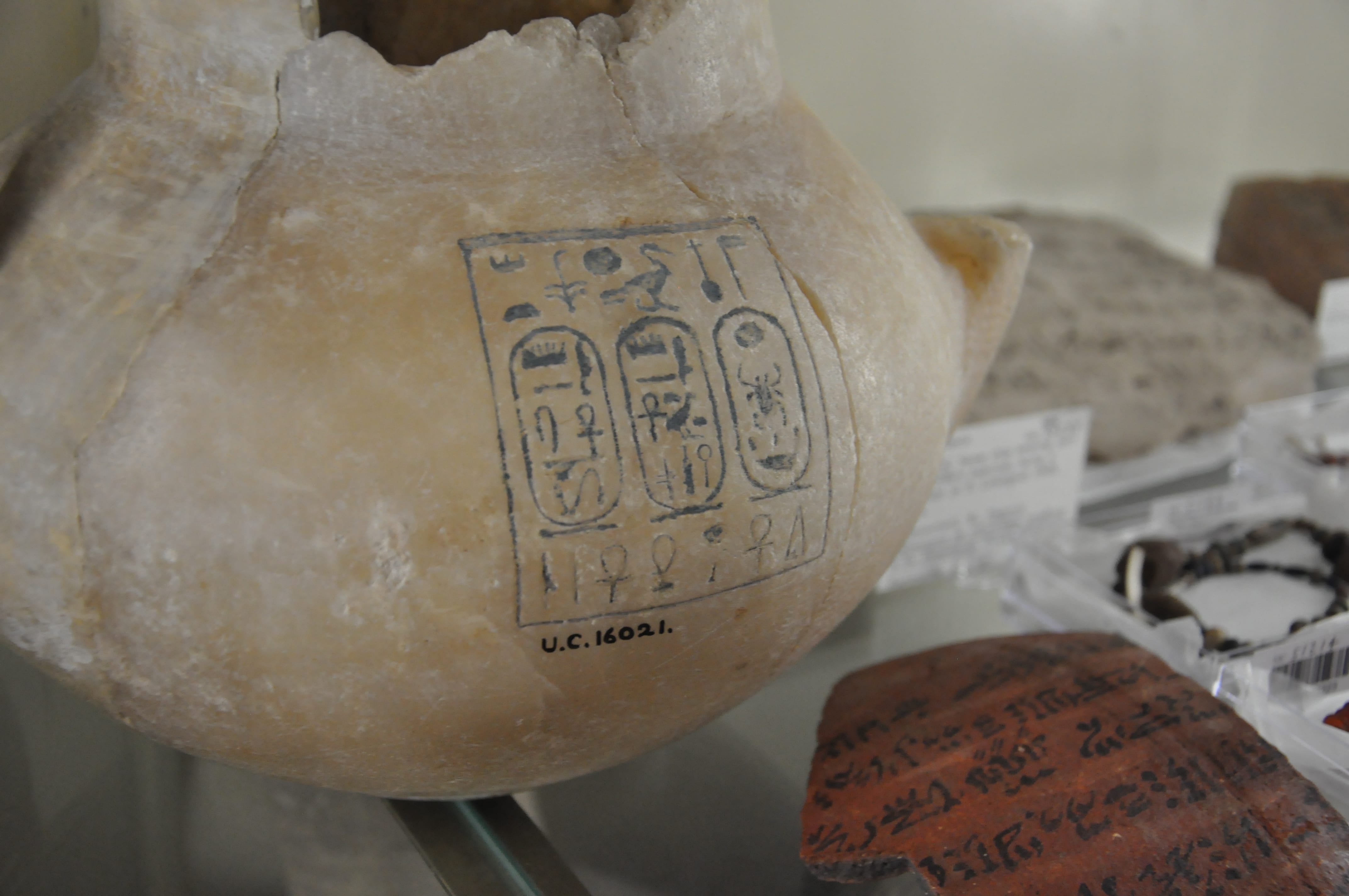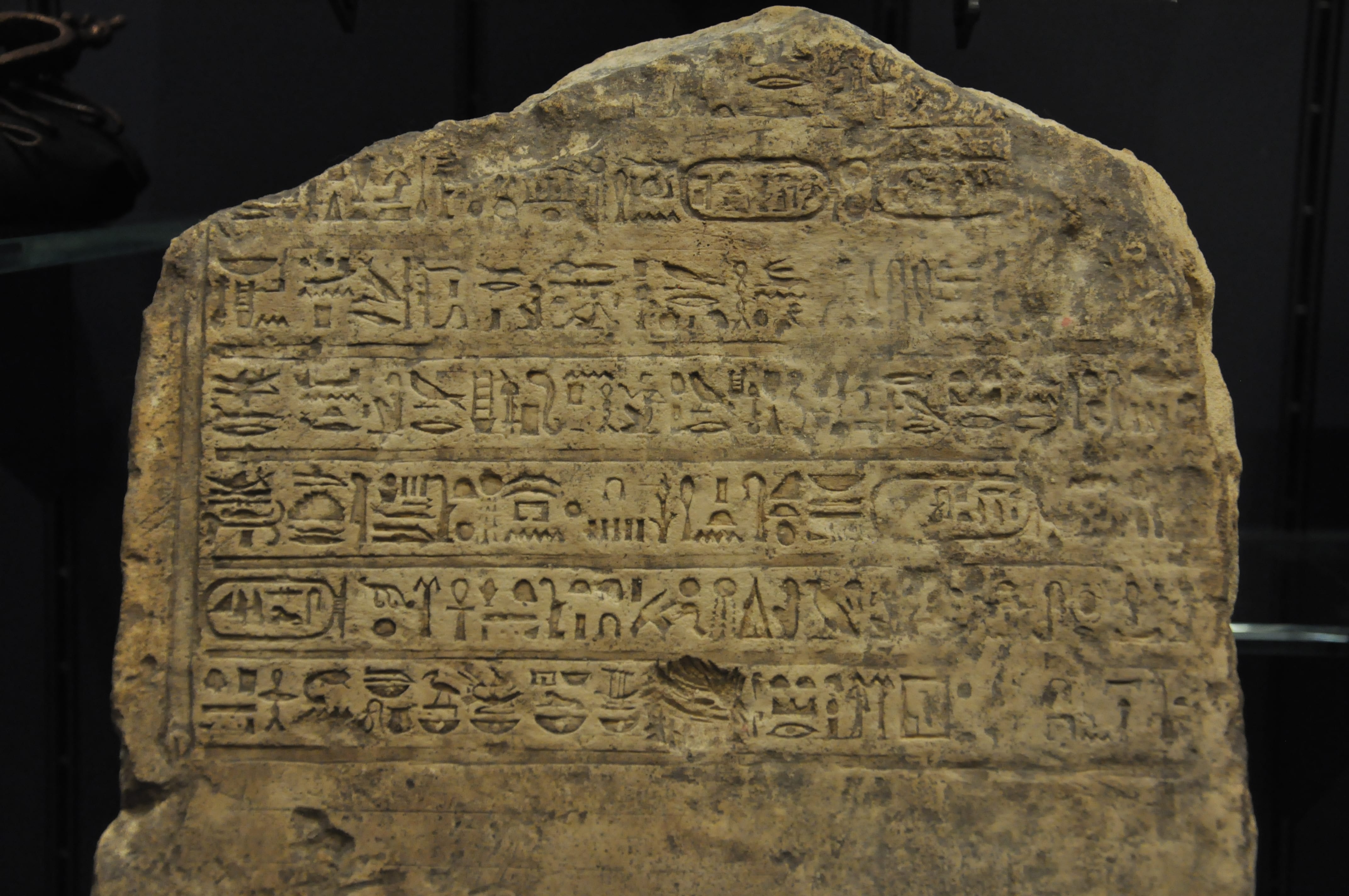Public Engagement with UCL Deafness Cognition and Language Research Centre
By Anna E Garnett, on 26 September 2018
Rebecca Lambert is a long-time volunteer of the Petrie Museum, and in this guest blog Rebecca reports on a recent engagement session which she led with UCL Deafness Cognition and Language Research Centre.
As a volunteer at the Petrie Museum of Egyptian Archaeology I am very keen to engage with people from all walks of life and to help make the museum collection accessible to all. Earlier this summer I was asked to assist with the preparation and delivery of offsite activity for the UCL Deafness Cognition and Language Research Centre as part of the UCL Discover Summer School for potential UCL undergraduates.
The brief was to create an Ancient Egyptian based activity which would be suitable for young adults with an age range of approximately 16-18 years of age. There were to be twelve participants who each had differing levels of hearing loss. Some of the students communicated solely through British Sign Language (BSL), whilst others would use a combination of sign language and lip reading. Some of the students could communicate verbally, whilst some could not. To create an activity which would be accessible, challenging, but most of all, fun, I had to decide on a format which would enable the students to explore Ancient Egypt. I decided that the session should primarily focus on the visual and not rely on convoluted descriptive narratives which can appear wearisome, especially to teenagers. This being the case, I opted to download three different empty cartouche designs. I also brought copies of images of particularly striking inscribed objects in the Petrie Museum collection, which are illustrated here.
After a brief introduction to Egyptian hieroglyphs, which was translated by BSL interpreters, I asked the students to create their own cartouches using either hieroglyphs from the ancient Egyptian period or by creating their own individual hieroglyphs. The key element was that the students had to create a visual representation of themselves which would be accessible to others. The brief suggested that the simpler the images, the easier it would be for others to understand the message being conveyed. However, it was ultimately up to the students to decide how simply, or elaborately, they wished to depict themselves.
The end results were fantastic. Some of the cartouches were very elaborate and highly detailed, whilst others were produced along simpler lines. All, however, showed real thought and a good understanding of the activity brief. I was particularly struck by the use of very similar images being used by different students to convey their perception of themselves in the larger world. The subject of hearing loss was addressed by several the participants. For myself, seeing how young people wish to present themselves to, not only their peers, but the larger world was really refreshing and exciting.
The session lasted for ninety minutes and I enjoyed every moment of it. The students were really engaging and seem to really enjoy the activity. They were very keen to learn more about so many aspects of the ancient past and did not only restrict their questions to the subject of Egypt. Being able to effectively communicate with the students, through the assistance of the BSL interpreters, really opened up the session for everyone involved, myself included. Previously I have undertaken training with VocalEyes to enable me to assist visitors with sight loss. After taking part in this session for UCL Discover I am aiming to begin BSL interpretation training this autumn to help further widen collection accessibility for future visitors to the museum.
 Close
Close




